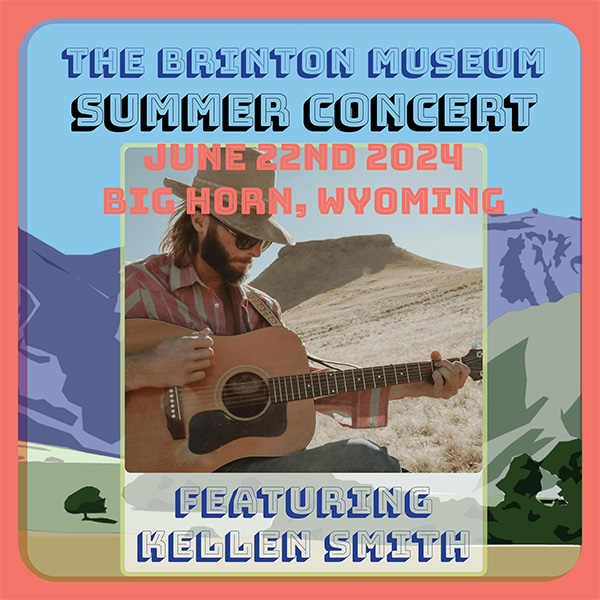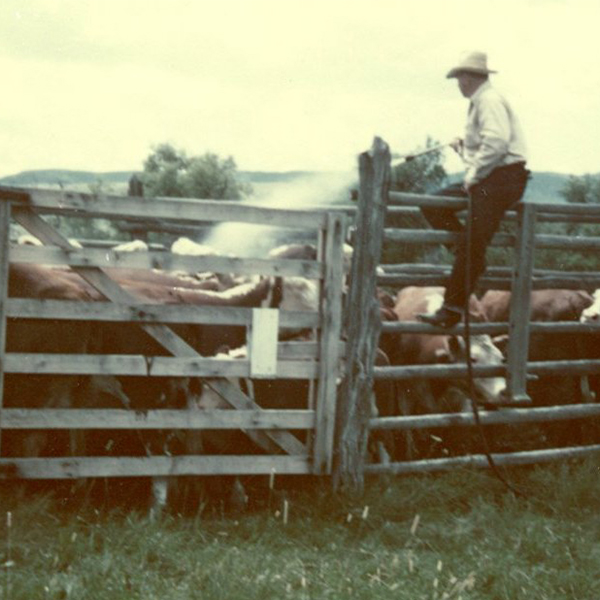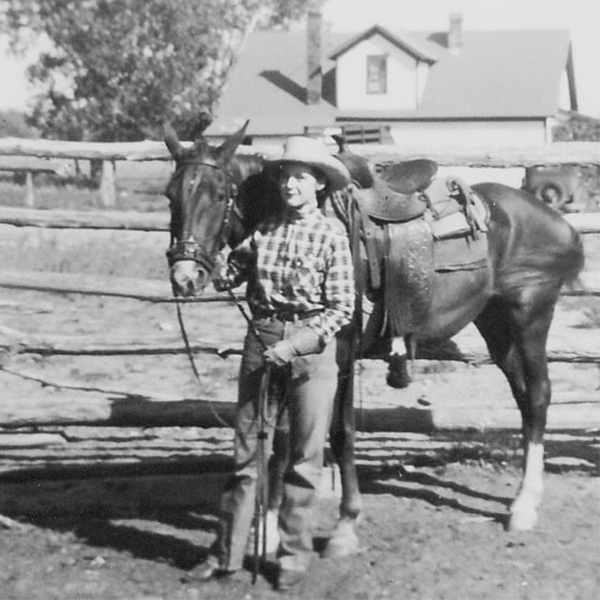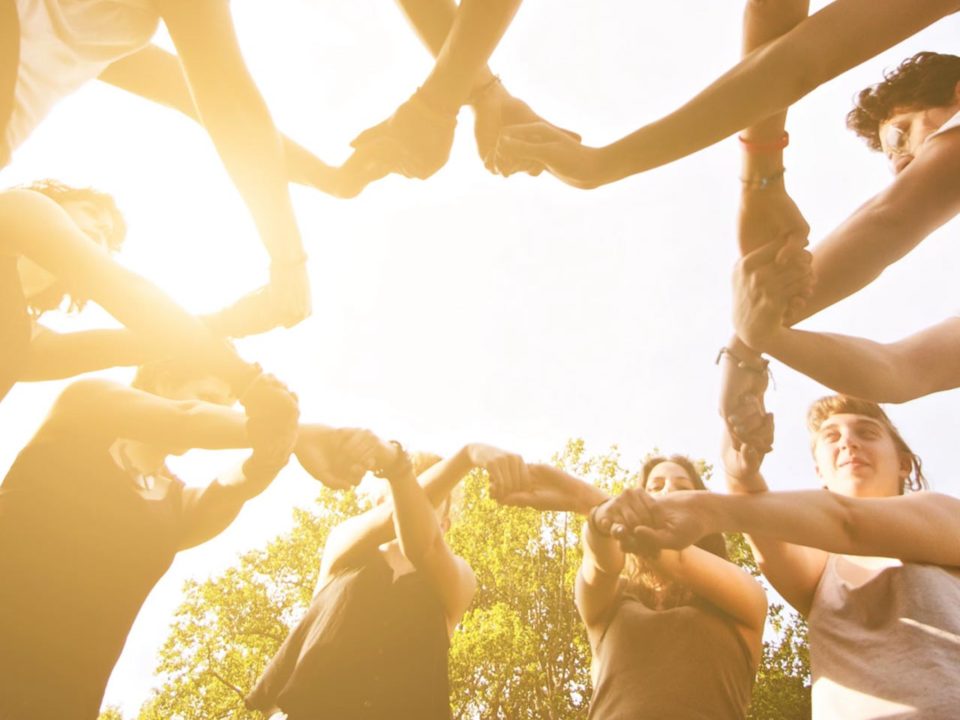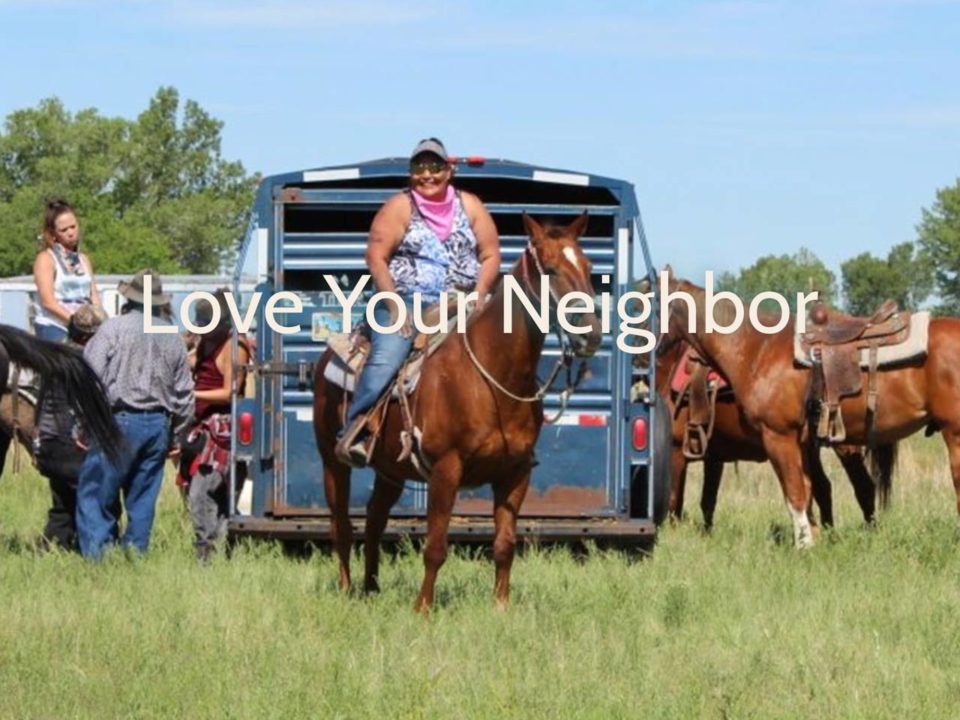The Past & the Present: Learning More about the Wyoming Cowboy
Wyoming’s proud cowboy history shines bright amongst the states. But their story goes deeper than roping and riding. To find out just a little more, the Hughes Charitable Foundation reached out to a few historical organizations that can shed a little light on this classic Western figure.
Answered by Barbara McNab, The Brinton Museum, Interim Curatorial Director & Curator of Exhibitions
What brought the cowboy and ranching to Wyoming?
First, one has to take a step back and look at the lay of the land before the days of cowboys and cattle. Like the whole continent, the land had once belonged to the American Indian People. The Northern Plains Tribes held dominance over the magnificent Northern Great Plains. In 1803, through the Louisiana Purchase, the United States acquired from the French 828,000 square miles of land west of the Mississippi River, which included vast territories of the Northern Plains. In 1804, the Lewis and Clark Corps of Discovery Expedition had forged its way from St. Louis (actually St. Charles, MO) to the Oregon Coast; this opened the floodgates for exploration, the Fur Trade Industry, and eventually widespread migration of whites looking to settle the rich grasslands of the West.
As the population of the United States grew rapidly, the need for beef increased exponentially. This spark began the era of cattle drives from Texas northward and eventually to the northern border. The open range of the Great Plains offered millions of acres of free grazing. The first cattle drives began in the mid-1860s with the Chisholm Trail and the Goodnight-Loving Trail. The Goodnight-Loving Trail went as far as Cheyenne (WY). Through the daring and hardiness of the cowboy (they called themselves cowpunchers), cattle drives brought longhorns by the hundreds of thousands to the northern region. The book titled We Pointed Them North, Recollections of a Cowpuncher, is a narration by Teddy “Blue” Abbott, born in 1860, and tells his story of riding with cowpunchers. He went on his first cattle drive in 1871 at the age of 11. Abbott offers a first-hand, vivid account of life on the open range. In hindsight, why anyone would at all consider it glamorous is undoubtedly due to Hollywood’s portrayal of the tried and true cowboy lulling a herd of longhorns to sleep, resting his aching, tired bones on the hard ground near a campfire and regaling boastful stories of this and that horse, this and that stampede, or whatever this and that might be. They had to endure the heat of unbearable hot summers, drought, blizzards, and unbearably cold temperatures in winter. It’s the kind of stuff that makes you or breaks you. I believe today we call this Wyoming tough.
It was inevitable that huge ranches would be established by wealthy gentlemen who could financially take on such an undertaking; beef was a lucrative business. To make a ranch successful, you had to have good cowboys who were good hands at riding, roping, and branding and who knew horses and cattle like no one else. Thus, the cowboy of the American West was born. I don’t imagine we’ll ever look back. Wyoming will forever revere the legend of the cowboy of the West above any other story.
More from The Brinton Museum
Answers provided by Candy Moulton, author of Roadside History of Wyoming and Steamboat: Legendary Bucking Horse and another 15 books, also the Executive Director of the Wyoming Cowboy Hall of Fame. A rancher’s daughter, she makes her home in Encampment.
What is unique about the history of Wyoming’s cowboys?
Wyoming cowboys who came north with herds of cattle from Texas found the climate in Wyoming was tough. Today’s cowboys have learned how to deal with that same harsh environment as they care for livestock herds year-round. They are known to bundle up and saddle up to move cattle in temperatures far below zero (especially with Wyoming's infamous wind and the extra chill it creates). They also work and care for their animals in other weather conditions, from rain to hot summer days. Wyoming Cowboys are a tough bunch of men and women. Most are ranch-raised and ranch-tough. Some compete in the rodeo arena with world champions, including bronc riders like Joe Alexander and Chris LeDoux, and men who work at timed events, such as Jhett Johnson, a world champion team roper.
The great legacy of Wyoming’s cowboys and cowgirls is still being built. And I might add that generally, “cowboy” in Wyoming is gender-neutral. Many of the best hands are women.
Why is it essential to preserve the history of the Wyoming cowboy?
Wyoming is known as the Cowboy State. The image of the bucking horse on our license plate is known and recognized worldwide. An image of the bucking horse was first used during World War II when a Sheridan man drew it on a drum used by the Wyoming guard unit in France. The man, George Ostrom, used his horse, Red Wing, as a model. In 1903, University of Wyoming Professor B. C. Buffum photographed Guy Holt riding Steamboat. That image was used to design the University of Wyoming logo in 1921 (Holt signed a model release on his image for that use). Then, in 1936, Wyoming Secretary of State Lester Hunt had the license plate made with a bucking horse image. That was an artist drawing by Allen True of Denver, who said it represented no particular cowboy. Through the years, the horse has been recognized as Steamboat, and many cowboys have been considered models. However, True himself said it was not anyone in particular; he used different photographs as inspiration.
This worldwide recognition is one reason why it is important for Wyoming to preserve the image and recognize our cowboy culture.
How can people better learn and understand the Wyoming cowboy and their rich history?
I can always recommend a book or two. “I See by Your Outfit: Historic Cowboy Gear of the Northern Plains” by Tom Lindmier and Steve Mount is a great book if you want to know what kind of clothing, chaps, spurs, hats, and other gear cowboys use in Wyoming. The autobiography by Reuben B. Mullins, “Pulling Leather: The Recollections of a Cowboy on the Wyoming Range,” is a perspective of life from a man who lived and breathed the work done from the back of a horse. My book, “Steamboat: Legendary Bucking Horse” co-written with Flossie Moulton, is a story of the horse on the Wyoming license plate, and it features the cowboys who rode the horse from his early days on the Foss Ranch and Two Bar Ranch near Wheatland, to his last days as the star of a Wild West Show put together by C. B. Irwin. These men were ranch cowboys, and some worked in the early rodeo arenas in Wyoming at Cheyenne Frontier Days and other locations. All these books are published by High Plains Press of Glendo. They give varied accounts of cowboy life through the decades.
Another way to meet Wyoming’s cowboys is to visit the Wyoming Cowboy Hall of Fame website, which features stories and short videos about the inductees recognized since 2014. Visit www.wyomingcowboyhalloffame.org.


